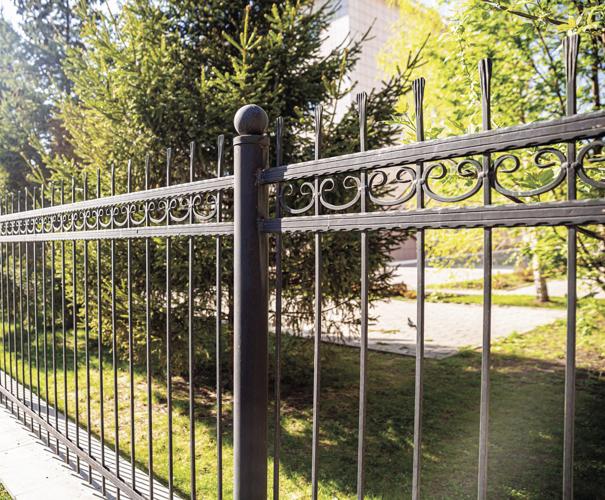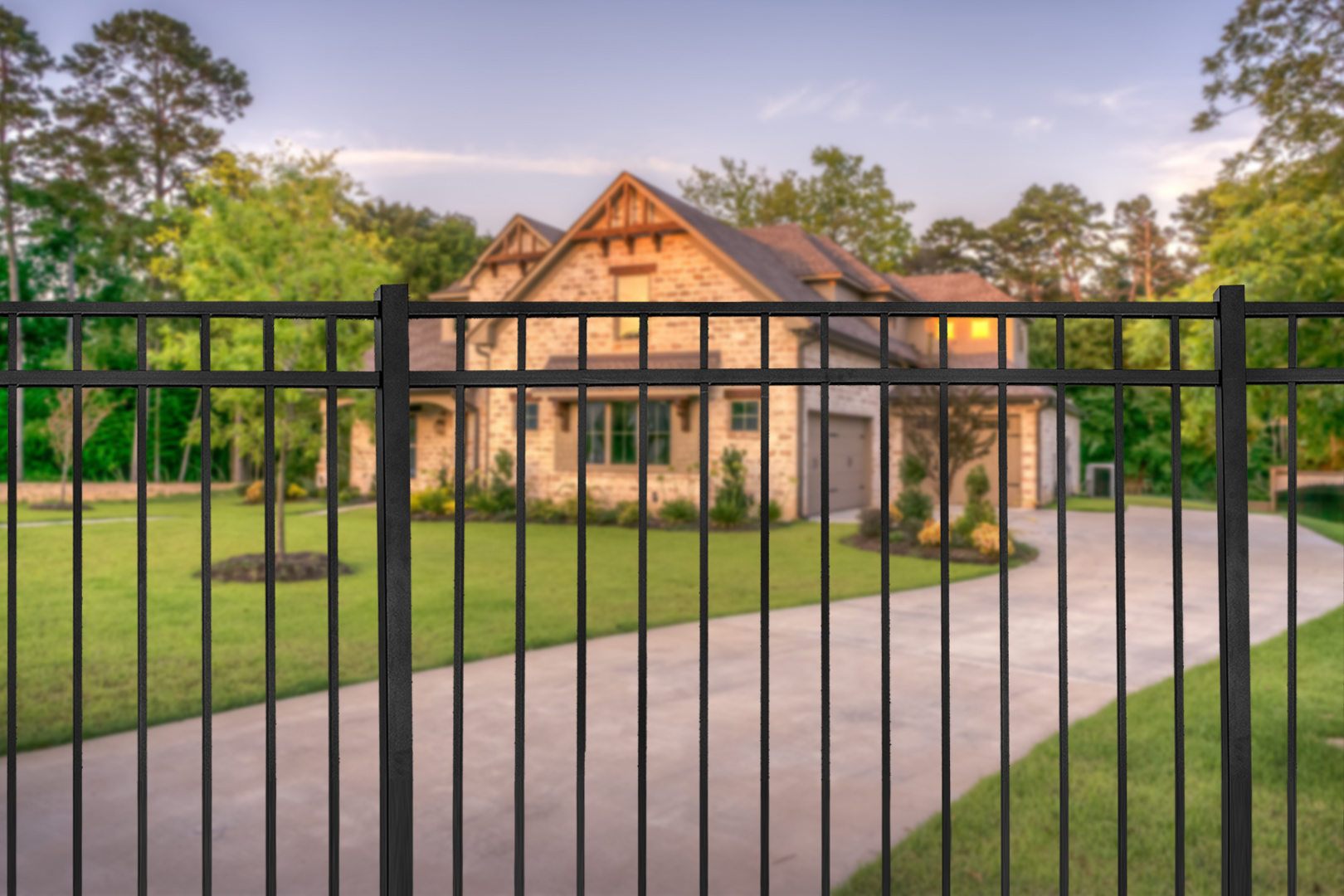All Categories
Featured
Installing a fencing on your home can include personal privacy, protection, and visual appeal, yet prior to you begin digging holes and setting posts, it's necessary to recognize whether you need a permit. The sort of fence you prepare to mount, where it will certainly be positioned, and regional zoning regulations can all influence the allowing procedure. Not obtaining the necessary permits could cause penalties or the need to eliminate the fence. Below's what you require to understand to ensure a smooth installment process.
Why Are Permits Essential for Fencing Setup? Authorizations are necessary for making certain that your fencing adheres to neighborhood zoning regulations and building ordinance. These guidelines aid make certain the security of your home and the surrounding area. Furthermore, permits prevent conflicts with neighbors or neighborhood authorities, particularly when it involves building lines, elevation restrictions, and total layout.
In many situations, local authorities call for permits to manage things like presence at junctions or the distance of a fencing to public spaces like pathways or roads. Authorizations likewise help ensure that fencings are mounted correctly and securely, specifically when it concerns high fences or special materials.
Usual Sorts Of Licenses for Fencing Installation. The sort of fencing you desire to install and your place will identify which authorizations are required. Below are one of the most usual kinds:
Building License. A structure authorization is usually required for fences that go beyond particular elevation restrictions (commonly above 6 feet), are located near a public road or sidewalk, or are made from certain materials. Building permits make sure that the framework satisfies neighborhood building regulations, including safety and security standards.
Zoning Authorization. Zoning licenses are typically needed to make certain that your fence complies with neighborhood zoning laws. Zoning legislations can define where a fence can be positioned on your residential or commercial property (e.g., along residential property lines or ahead yards), along with established limits on fence elevation. These legislations are created to avoid obstructions that can affect web traffic security or area appearances.
![]()
Obstacle Permit. In some locations, you might need a problem license to put your fencing a certain distance from residential property roads, energies, or lines. Setbacks are intended to preserve correct space between frameworks and property boundaries, lowering possible conflicts with neighbors or public infrastructure.
Homeowners Organization (HOA) Authorization. You will likely need approval from the HOA before setting up a fencing if your residential property is component of an area controlled by a Homeowners Organization (HOA) HOA guidelines typically regulate the design, elevation, products, and even color of fencings, making sure that they match the overall aesthetic of the community.
The Process for Acquiring a Fencing Permit. To obtain a fence authorization, you typically need to call your local city or area workplace. Many locations have a structure division or preparation workplace where you can look for permits. The procedure includes finishing an application and providing thorough details concerning your proposed fencing, consisting of:
Fencing style (materials, elevation, design) Area on the residential property. Building line details (for accurate placement) In a lot of cases, a website strategy showing the proposed fence's placement will certainly be needed. You may also need to pay an authorization cost, which can vary based on area and the intricacy of the task.
As soon as you submit your application, the local authorities will review it to make sure the fence adheres to neighborhood policies. Depending on your place, you may also need to schedule an evaluation or enable for a home study.
When Do You Not Need an Authorization? In many cases, an authorization might not be required. Generally, you could not require an authorization if:
![]()
The fence is under a certain elevation (typically 3-4 feet for front backyards) You're replacing an existing fencing with the very same kind and elevation. The fencing is short-term (such as a yard fence) Nevertheless, it's always a great idea to check with your local structure or zoning division to validate the requirements, as regulations can differ.
Consequences of Not Obtaining a Permit. Stopping working to acquire the required permits can lead to numerous problems. One of the most common repercussion is being fined or asked to get rid of the fence. Sometimes, you might need to re-install the fence according to code, which could be time-consuming and pricey. Furthermore, not following the proper permitting process can produce problems with next-door neighbors, particularly if your fence extends beyond your property line or doesn't fulfill height or layout needs.
Conclusion. Prior to installing a fencing, make certain you're aware of the regional regulations and whether you require an authorization. By acquiring the correct authorizations, you'll guarantee that your fence is legitimately certified, safe, and complimentary from future complications.
Why Are Permits Essential for Fencing Setup? Authorizations are necessary for making certain that your fencing adheres to neighborhood zoning regulations and building ordinance. These guidelines aid make certain the security of your home and the surrounding area. Furthermore, permits prevent conflicts with neighbors or neighborhood authorities, particularly when it involves building lines, elevation restrictions, and total layout.
In many situations, local authorities call for permits to manage things like presence at junctions or the distance of a fencing to public spaces like pathways or roads. Authorizations likewise help ensure that fencings are mounted correctly and securely, specifically when it concerns high fences or special materials.
Usual Sorts Of Licenses for Fencing Installation. The sort of fencing you desire to install and your place will identify which authorizations are required. Below are one of the most usual kinds:
Building License. A structure authorization is usually required for fences that go beyond particular elevation restrictions (commonly above 6 feet), are located near a public road or sidewalk, or are made from certain materials. Building permits make sure that the framework satisfies neighborhood building regulations, including safety and security standards.
Zoning Authorization. Zoning licenses are typically needed to make certain that your fence complies with neighborhood zoning laws. Zoning legislations can define where a fence can be positioned on your residential or commercial property (e.g., along residential property lines or ahead yards), along with established limits on fence elevation. These legislations are created to avoid obstructions that can affect web traffic security or area appearances.

Obstacle Permit. In some locations, you might need a problem license to put your fencing a certain distance from residential property roads, energies, or lines. Setbacks are intended to preserve correct space between frameworks and property boundaries, lowering possible conflicts with neighbors or public infrastructure.
Homeowners Organization (HOA) Authorization. You will likely need approval from the HOA before setting up a fencing if your residential property is component of an area controlled by a Homeowners Organization (HOA) HOA guidelines typically regulate the design, elevation, products, and even color of fencings, making sure that they match the overall aesthetic of the community.
The Process for Acquiring a Fencing Permit. To obtain a fence authorization, you typically need to call your local city or area workplace. Many locations have a structure division or preparation workplace where you can look for permits. The procedure includes finishing an application and providing thorough details concerning your proposed fencing, consisting of:
Fencing style (materials, elevation, design) Area on the residential property. Building line details (for accurate placement) In a lot of cases, a website strategy showing the proposed fence's placement will certainly be needed. You may also need to pay an authorization cost, which can vary based on area and the intricacy of the task.
As soon as you submit your application, the local authorities will review it to make sure the fence adheres to neighborhood policies. Depending on your place, you may also need to schedule an evaluation or enable for a home study.
When Do You Not Need an Authorization? In many cases, an authorization might not be required. Generally, you could not require an authorization if:

The fence is under a certain elevation (typically 3-4 feet for front backyards) You're replacing an existing fencing with the very same kind and elevation. The fencing is short-term (such as a yard fence) Nevertheless, it's always a great idea to check with your local structure or zoning division to validate the requirements, as regulations can differ.
Consequences of Not Obtaining a Permit. Stopping working to acquire the required permits can lead to numerous problems. One of the most common repercussion is being fined or asked to get rid of the fence. Sometimes, you might need to re-install the fence according to code, which could be time-consuming and pricey. Furthermore, not following the proper permitting process can produce problems with next-door neighbors, particularly if your fence extends beyond your property line or doesn't fulfill height or layout needs.
Conclusion. Prior to installing a fencing, make certain you're aware of the regional regulations and whether you require an authorization. By acquiring the correct authorizations, you'll guarantee that your fence is legitimately certified, safe, and complimentary from future complications.
Latest Posts
Learn About Best Car Repair Care offered by Montclare Auto Repair – Drive with Confidence
Published May 29, 25
1 min read
Explore Best Car Repair Care from Montclare Auto Repair – Expert Care for Your Vehicle
Published May 28, 25
1 min read
Boost Your Residential Property with Overhead Door Equipment
Published May 24, 25
1 min read
More
Latest Posts
Learn About Best Car Repair Care offered by Montclare Auto Repair – Drive with Confidence
Published May 29, 25
1 min read
Explore Best Car Repair Care from Montclare Auto Repair – Expert Care for Your Vehicle
Published May 28, 25
1 min read
Boost Your Residential Property with Overhead Door Equipment
Published May 24, 25
1 min read